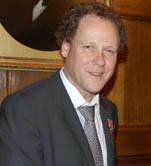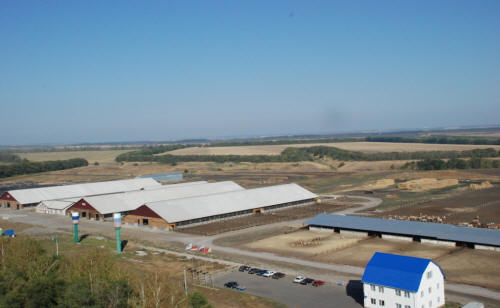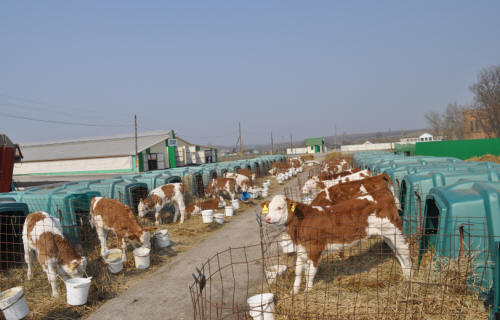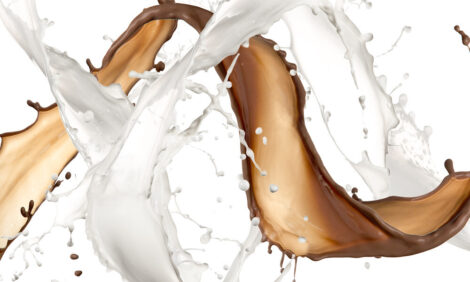



Rapid Dairy Expansion In Russia
Currently one of the top five milk producers in Russia, producing 120,000 kg of milk a day, EkoNiva hopes to more than quadruple its herd by 2020, said President Stefan Duerr at a recent European Dairy Farmers conference. Charlotte Johnston, TheCattleSite junior editor reports.
EkoNiva is a German/Russian business, primarily split into two parts. The first being a machinery dealership and the second being core agriculture.
It is one of the top 30 largest agricultural businesses in Russia, with milk production being the main business.
The dairy business has expanded rapidly over recent years and now compromises of five large farms, spread throughout West and South Russia.
Across the five farms, there are 8,300 milking cows, producing between 4,500 - 7,500 kg a year. The lower milk producing cows are older animals, which have come from farms which the company has taken over, says Mr Duerr. This in turn lowers the average yield.
In total the company has 21,100 cattle, including youngstock. It has recently begun to produce beef and is experimenting with a number of different cattle rearing methods, including tradtional European feedlots, cow/calf production and US feedlot styles.
As well as the livestock enterprises, EkoNiva farms over 125,500 hectares, of which 94,810 hectares are arable. It is the third largest seed producer in Russia, producing grain, grasses and legumes. In total annual seed production is approximately 30,000 tonnes.
As well as seed production, cash crops include wheat, barley, oats, rye, corn/ maize, soya beans, peas, sunflowers, rape seed and sugar beet.

Milk Production
There are a number of breeds used, says Mr Duerr, including Simmentals, Swiss Brown, Holstein-Fresian Black and Red, and local Red cattle.
Cows are fed haylage (a mixture of alfalfa, clover and grass), as well as maize silage and concentrates.
On all the dairy farms, new cattle houses have been built where necessary, otherwise older buildings have been reconstructed, which has resulted in large investment costs.
The new cow sheds are built to hold between 1500-1800 cows. A new dairy shed built to hold 1500 cows and youngsters on a greenfield site recently cost the company €4,500 per cow (including the infrastructure, silo pits etc.)
Reconstruction costs can range between €800 and €2,000 per cow, depending on the intensitivity required.
As the company is trying to increase cow numbers rapidly, pregnant heifers are imported from Europe. However, EkoNiva also hopes to import live cattle from Australia and North America in the future, says Mr Duerr.
Costs for imported pregnant heifers range between €2,600 - €3,000, which is very similar to what it costs to buy local high quality pregnant heifers. A local low quality pregnant heifer is substantially cheaper at around €600.
Whilst importing livestock, the company is also looking to improve local herds and imports semen from North America.
As mentioned above, milk yields range between 4,500 - 7,500 kg/ cow/ year. "These are not super yields," said Mr Duerr. However, a profit can still be made when prices fall. "Seeing as the price is €.46 cents/ kg - we have nothing to worry about," he says.
Operating costs are the moment are €0.26 per kg, with forage and concentrates being the largest cost, combined at €0.11 per kg of milk.
EBITDA, which is earnings before interest, taxes, depreciation and amortisation, is €0.2 per kg.
State of dairy in Russia
With milk production in Russia declining, dairy farming is a high priority for the government. Although total domestic annual milk production is 15 million tons, only 14 million of this is processed, whilst over 20 million tons is sold through retailers.
The government are keen to reduce the necessity of imported dairy products through increased domestic production.
Subsidies available
Because of this, Mr Duerr says that government subsidies are available for investors. Interest rates for monies borrowed from banks varies between eight to 16 per cent. However, government subsidies on interest rates are available at 10.75 per cent per annum for cowhouses and heifers.
The subsidies available vary greatly depending on regions, but Mr Duerr says that as an average the following is available:
- €800 per heifer
- 15 per cent of investment made on equipment purchases
- 50 per cent of costs of infrastructure
- Permanent subsidies for breeding cattle of €150 per year per head

Of total production about two to four million tons comes from small farms, and one to two million comes from the larger modern dairy farms. The majority of milk production comes from the traditional collective farms.
Mr Duerr says that the number of small farms is decreasing rapidly, due to a mixture of drought raising the cost of production and increased standards of living. Traditional collective farms have also seen cow numbers fall in recent years. Large, modern dairy farms are now becoming the norm, as they buy out smaller units. In fact, Mr Duerr says that the top 300 farms in the country make up for more than 50 per cent of Russia's commercial agricultural production.
He says that in the next three to five years there will be a lack of milk in Russia. To combat this, Russian dairy producers require higher prices than the world market because of the high investment requirements and lack of knowledge and experience, he says.
He expects the government to continue to import dairy products for a while, in order to allow domestic production to develop.
"As a result of this, Russia will be able to export dairy products in five to 10 years time."
Challenges faced
"There is a lack of widespread knowledge in agriculture, which has hindered Russia's progression onto world markets," says Mr Duerr. "Because of the large divide between modern and traditional methods, it is initially very difficult to initiate modern practices."
There is knowledge out there, he says, but the people with the knowledge often do not have the capital required to implement changes, and vice versa. There are many investors who do not have the knowledge required to run a dairy farm, very few have both.
EkoNiva employs a lot of skilled foreign labour for managerial positions, and encourages training of all staff.
The future
"Personally, I feel that in 10 years time, Russia will be in a much stronger position. We will have the knowledge needed to move forward," says Mr Duerr. "I expect that large modern farming companies with between 30,000-300,000 ha will dominate production."
"I would like to see efficiency improve, with farms producing stable, good yields at reasonable costs - especially in the more fertile areas.
"EkoNiva will aim to have cows averaging 8,000 kg milk per cow at a cost of€0.2 per kg. This is a huge challenge for the production system, but an area where foreign knowledge can help."
Rapid expansion is planned for the EkoNiva dairy business, with aims to increase the number of milking cows to 10,000 by the end of the year, 20,000 milking cows in 2013 and 40,000 milking cows in 2020.
"If necessary, EkoNiva will establish its own dairy processing facility," he said. Whilst for many European dairy producers, this rapid expansion is unimaginable, he says that this development schedule is typical for many of the large dairy farms in Russia.
He says it is necessary to increase production whilst subsidies are available - and he predicts that they may only last another three to four years.
Concluding he said that it is an exciting time for the Russian dairy industry. There is strong support for investments in milk production, which is also available to foreigners.


